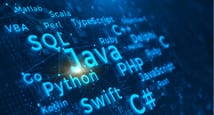- Thermal problems and challenges in electrical and electronics
- When to do thermal analysis
- Basics of heat transfer in electronics
- Analogy - electrical vs. thermal
- Thermal resistance and capacitance
- Thermal management at different levels – component/chip/package level, board level, and system level
- Different components in electronics
- Process of solving thermal issue using ICEPAK
- Most influential factors in thermal management of electronics
- Overview of Ansys ICEPAK (Software introduction)
Electronic Cooling Simulations using ANSYS ICEPAK
Understand the concepts of Computational Fluid Dynamics by enrolling for the Electronic Cooling Simulations using ANSYS ...Read more
Online
3 Months
Quick Facts
| particular | details | |||
|---|---|---|---|---|
|
Medium of instructions
English
|
Mode of learning
Self study
|
Mode of Delivery
Video and Text Based
|
Course overview
Electronic Cooling Simulations using ANSYS ICEPAK course is being offered by Skill Lync to give the learners an opportunity to understand the concepts of computational fluid dynamics. Skill-Lync is a platform that provides industry-oriented advanced engineering courses for engineering students by collaborating with industry experts. ANSYS ICEPAK is a powerful CFD suite, which enables multi-physics coupling between thermal, electrical, and mechanical analyses for electronics design.
It is combined with thermal–stress analysis, ANSYS Workbench for coupling with MCAD, with ANSYS Mechanical, and advanced post-processing through ANSYS CFD-Post. Through this course, participants will learn the procedure of providing effective cooling, modeling and treating the electronic systems manually on ICEPAK.
They will gain knowledge about the ANSYS ICEPAK software and SpaceClaim software. SpaceClaim helps in building CAD models for CFD analysis and converts them into CAD shapes. The course covers various aspects such as physics of the problem, thoughts on simulation method, problem setup and boundary conditions, visualization to quantitative post-processing, results, and meshing of geometry.
The highlights
100% Online learning
Free demo session available
Flexible course fees
Guaranteed course certification will be given
12 weeks course duration
Certificate provided by Skill Lync
Program offerings
- Individual video support
- Video lectures
- Dedicated support engineer
Course and certificate fees
The course fee is as per three different plans that are given below:
The candidates need to make a fee payment of Rs. 7000 per month for accessing the programme of 3 months. This will be a Basic plan.
The candidates need to make a fee payment of Rs. 10000 per month to access the programme of 3 months. This will be a Pro plan.
The candidates need to pay a fee of Rs. 15000 per month to access the programme for a lifetime. This is a premium plan.
Fee details for Electronic Cooling Simulations using ANSYS ICEPAK course
Particulars | Amount (in Rs) - per month payment |
Basic - this is a 2 months access | Rs.7000/- |
Pro - this is a 4 months access | Rs.10000/- |
Premium - lifetime access programme | Rs.15000/- |
certificate availability
Yes
certificate providing authority
Skill Lync
Who it is for
The Electronic cooling simulations using the ANSYS ICEPAK programme is ideally meant for:
Manufacturing engineers
Design engineers
Professionals who are engineers but are working currently in a non-CFD area and aspire to pursue CFD domain
Students who are keen and interested in Fluid mechanics and Thermal system
A student who is currently studying in MS or MTech or a Non-CFD field
Students who aspire to learn and work in the field of CFD
Eligibility criteria
Work experience
Candidates applying for this programme can be either Electronics engineer, Electrical engineer, or Mechanical engineer
Education
Candidates applying for this programme must have a knowledge of fluid dynamics and heat transfer will be beneficial.
*Note- The students should have access to ANSYS ICEPAK
Certification Qualifying Details
Skill Lync will award a course certificate for Electronic Cooling Simulations using ANSYS ICEPAK course to those participants who have successfully completed the course. The top five percent of the class will be awarded a merit certificate.
What you will learn
As the Electronic Cooling Simulations using ANSYS ICEPAK course by Skill-Lync programme wraps, candidates will learn a series of areas that are given below:
The candidates will be able to understand the heat transfer in electrical and electronics cooling
They will learn how to build thermal models of electronic devices with ICEPAK primitive shapes.
They will be able to acknowledge the use of different meshing techniques
They will grasp the basics of natural convections
They will be able to understand the uses of the heat sink
They will gain expertise in the subject of ANSYS ICEPAK
They will be able to understand the user input properties and parameters
Participants will be able to learn to analyze transient simulations
The syllabus
Week 1 : Introduction to electronics cooling
Week 2 : ICEPAK Model Building
- Thermal simulation approach
- Different primitives and compound objects in ICEPAK with their uses in the thermal model
- Building the first project in ICEPAK
- Geometry creation using ICEPAK to capture geometric information, material properties, and boundary conditions
- Priorities of objects
- Setting up the first problem
- Meshing
- Solving the first problem
- Checking the convergence
- Post-processing and interpretation of results
Week 3 : Meshing Techniques
- Conformal meshing
- Non- conformal meshing
- Cold-plate model with non-conformal meshing
- Zero slack with non-conformal meshing
- Multi-level meshing
- Mesh and model enhancement exercise
- Global refinement for a hex-dominant mesh
- Best practices for meshing complex geometries
- Hands-on meshing examples and home works
Week 4 : Natural Convection
Basics of buoyancy effect
Basics of natural convections
Compare design alternatives
Design of a thermal system for best use of natural convections
Week 5 : Forced convection
Hands-on examples and homework
Choose a pump, fan, fluid mover to perform adequate fluid flow rate
Uses of the heat sink
Basics of forced convections
Understand heat pipes modeling and nested non-conformal meshing
Week 6 : Heat generation
Analyze trace heating in PCB in electronics
Perform board-level electrothermal coupling
Analyze heat generation due to Joule heating in electronic and electrical device
Hands-on examples and homework
Pcb modeling: compact and detailed modeling
Week 7 : Cad imports
Cad and ecad import options within icepak
Hands-on examples and homework
Design modeler/SpaceClaim
Translation of mcad geometry to icepak native geometry
Week 8 : Radiation modeling
Solar radiation / flux calculator
Different radiation models in icepak
Hands-on examples and homework
When to include a radiation model (t^4)
User input properties and parameters
Week 9 : Post-processing
Contours
Section planes
Various post-processing methods and plots
Streamlines
Hands-on examples and homework
Reporting results
Vector plots
Week 10 : Advanced simulations
Use of advanced methods in projects
Analyze transient simulations
Hands-on examples and homework
Understand the zoom-in modeling approach in icepak
Week 11 : Macros
Create bonding wires
Jedec test chambers - natural convection and forced convection
Pcb
Detailed heat sink
Datacenter components
Week 12 : Optimization
Function reporting and plotting
Defining design variables and a parametric study in icepak
When to use optimization
Define parametric runs and assign primary functions
Setting up & running trials
Admission details
Filling the form
Candidates need to follow the admission steps that are given below:
Step 1: Visit the official URL for the course.
Step 2: The option to enrol will be available on the webpage. Select that option.
Step 3: Candidates can choose the course plan they wish to register for.
Step 4: They have to fill in the details asked for to proceed further.
Step 5: After filling in the details, candidates need to make the fee payment in order to get the access link of the programme.
How it helps
The Electronic Cooling Simulations using ANSYS ICEPAK course has been structured by industry experts to provide the learner's knowledge about electronic cooling simulations. Participants will be given industry-relevant projects to work on, tools, and software to practice upon. The experience and knowledge that they will get by working on the projects and software will set them and give them an advantage over others in the industry. Online course delivery will make the learning process easier for the participants.
They can maintain a flexible learning schedule. They will be given email, telephone, WhatsApp support in case of any doubts or queries through the course.
Course certificate that is given upon completion can be added to the resume making it more valuable. It can also be shared on various platforms to invite more job opportunities. They can link their technical projects as well to display their skills and capabilities. It will also strengthen the portfolio of the participants for getting better grants and scholarship opportunities for MS Admits. It will expand their prospects in Research & Development and for higher profile jobs in electrical and electronic industries.
They will be given placement assistance through resume building and interview preparation. Student success team access will also be given to ensure placements.
FAQs
Who are the course instructors?
The course instructors for this course are industry experts working with Fortune 500.
What will be the learning process?
Participants will be given access to the course material and assignments every week.
How will the doubts be solved?
Doubts can be solved through videoconferencing, WhatsApp support, and individual online sessions and also in person. They can be solved by the dedicated support engineer assigned to the participants to walk them through their problem areas and clarify any doubts that may arise.
How can I find this programme to be different from other colleges?
The courses are designed in consultation with industry experts. It gives the participants an opportunity to implement their learning and work on projects that will give them practical experience as well.
What is the real world application of the tools and techniques learned?
Some of the real-world applications of this course are a thermal simulation of heat generation in electrical components due to joule losses, Pcb thermal simulations, conduction, radiation and force, and natural convections.
Which companies use this technique?
Some of the companies that make use of these tools include Schneider Electric, Intel, Cisco, Apple, Altair, L&T, NVIDIA, ABB, Philips, and many more.
Are demo sessions given?
Yes, candidates are given a demo session to help them understand what is included in the course and how they will benefit, from an experienced consultant.


 Brochure
Brochure Enquire
Enquire










